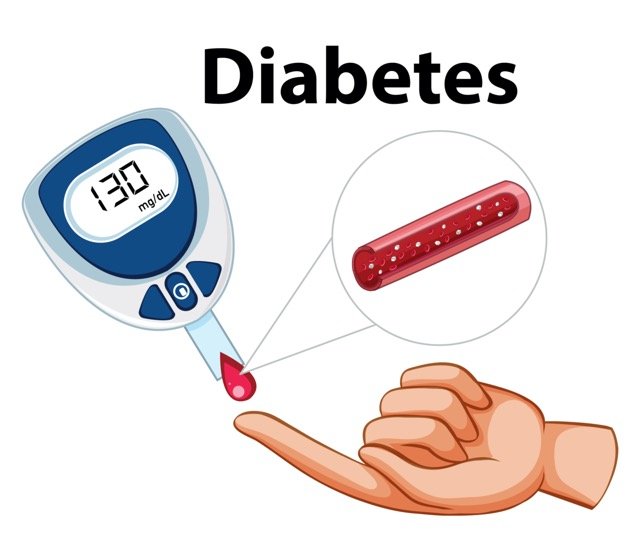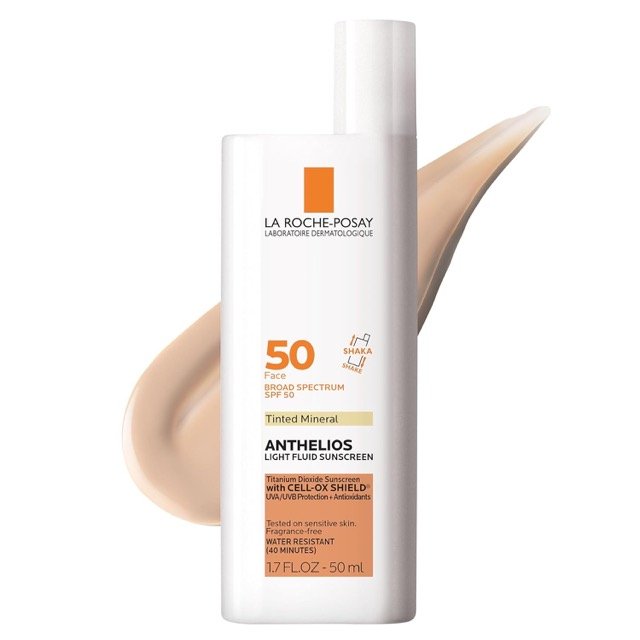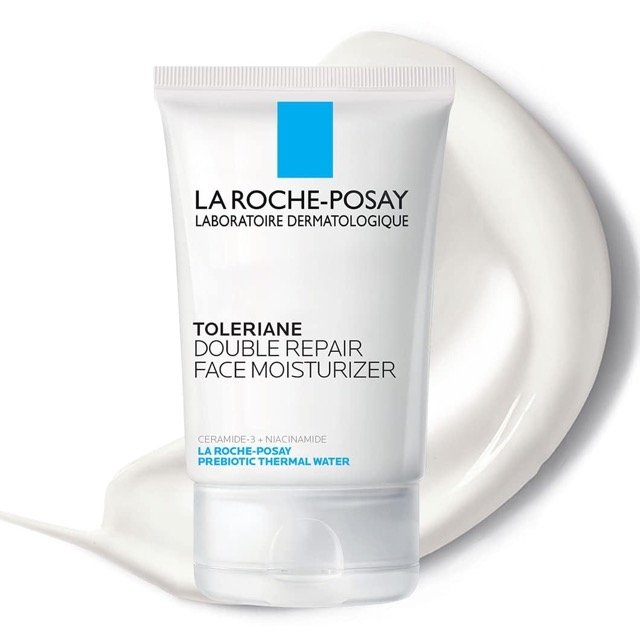Cilazapril is a medication used to treat high blood pressure (hypertension) and certain heart conditions. It belongs to a class of drugs known as angiotensin-converting enzyme (ACE) inhibitors. ACE inhibitors work by relaxing blood vessels, which helps to lower blood pressure and improve the heart's ability to pump blood.
The angiotensin-converting enzyme is inhibited by the competitive agent cilazapril. It inhibits the renin-angiotensin-aldosterone pathway by preventing the conversion of angiotensin I to angiotensin II. Angiotensin II's suppression results in vasodilation since it possesses potent vasoconstrictive effects. As a result, it is recommended for the treatment of heart failure and hypertension.
Off-Label uses in adults:
- ST-elevation & non–ST-elevation
- Patients with a stable coronary artery disease.
Cilazapril dose in Adults
Cilazapril For heart failure:
- Start with a low dose: Take 0.5 mg of cilazapril once a day.
- After 5 days, if it's well tolerated and working, increase the dose to 1 mg once a day.
- If needed, your doctor may raise the dose to a usual maintenance level of 2.5 mg once a day.
- The highest dose you should take is 2.5 mg once a day.
- In a few cases, some patients benefited from doses up to 5 mg once a day, but there isn't much data to support this. Your doctor will decide the right dose for you.
Cilazapril For Hypertension:
- Start with 2.5 mg of cilazapril once a day.
- Your doctor will adjust your dose based on how your blood pressure responds, but this adjustment should happen at least every 2 weeks.
- The usual dose is between 2.5 mg and 5 mg once a day, but the highest dose should not exceed 10 mg per day.
- If your blood pressure isn't well controlled throughout the day, your doctor may split your daily dose into two smaller doses.
- If you have severe hypertension, are low on salt or fluids, or have heart problems, your doctor may begin with just 0.5 mg once a day and closely monitor you.
Combination with Diuretic (Water Pill):
- If cilazapril is combined with a diuretic, start with a very low dose of 0.5 mg once a day.
- Gradually increase the dose as your body tolerates it.
Cilazapril Dose in Childrens
The manufacturer has not recommended any dose in the pediatric age group.
Pregnancy Risk Factor X
- Cilazapril should not be used during pregnancy as it can be harmful to the developing fetus.
- Medications that affect the renin-angiotensin system, like cilazapril, can lead to severe harm and even death to the developing baby.
- If a pregnancy is detected, cilazapril should be stopped as soon as possible.
- Women who are planning to become pregnant should switch to a different treatment that has been proven safe during pregnancy.
- There is a risk of birth defects when cilazapril is used during pregnancy. These birth defects can include problems with the baby's lungs and skeleton.
- Medications affecting the renin-angiotensin system can cause a condition called oligohydramnios, which results from reduced fetal kidney function. This condition can lead to underdeveloped lungs and skeletal problems in the baby.
- Using ACE inhibitors like cilazapril during pregnancy can result in the baby having anuria (lack of urine production), low blood pressure, kidney problems, underdeveloped skull, and even death.
- It's important to note that chronic maternal hypertension itself can also have negative effects on both the mother and the baby during pregnancy.
- ACE inhibitors are not recommended for treating maternal hypertension or heart failure during pregnancy.
- Women of reproductive age should avoid using ACE inhibitors.
- If a baby has been exposed to cilazapril in the womb, doctors should closely monitor the baby for high levels of potassium (hyperkalemia), low blood pressure, and decreased urine output.
- Additionally, exposed infants should be monitored for their growth, the amount of amniotic fluid around them, and the development of their organs.
Use of Cilazapril while breastfeeding
- Cilazapril's presence in breast milk is not known, and as a precautionary measure, its use is contraindicated in breastfeeding women.
Cilazapril Dose adjustment in Renal Disease:
Heart Failure:
- If your creatinine clearance is greater than 40 mL/minute, start with 0.5 mg of cilazapril once daily, with a maximum dose of 2.5 mg once daily.
- If your creatinine clearance is between 10 and 40 mL/minute, the initial dose is 0.25 to 0.5 mg once daily, with a maximum dose of 2.5 mg once daily.
- If your creatinine clearance is less than 10 mL/minute, cilazapril use is not recommended.
Hypertension (High Blood Pressure):
- If your creatinine clearance is greater than 40 mL/minute, start with 1 mg of cilazapril once daily, with a maximum dose of 5 mg once daily.
- If your creatinine clearance is between 10 and 40 mL/minute, the initial dose is 0.5 mg once daily, with a maximum dose of 2.5 mg once daily.
- If your creatinine clearance is less than 10 mL/minute, cilazapril use is not recommended.
Please note that creatinine clearance is a measure of kidney function, and these dosage adjustments are made to ensure that the medication is used safely and effectively, taking into account the patient's kidney function.
Cilazapril Dose adjustment in Liver disease:
In cirrhotic patients without ascites who have hypertension, the initial dose of cilazapril should be very low, specifically ≤0.5 mg once daily.
Cilazapril Side Effects:
- Cardiovascular:
- Symptomatic hypotension
- Palpitations
- Orthostatic hypotension
- Central nervous system:
- Fatigue
- Headache
- Dizziness
- Gastrointestinal:
- Nausea
- Neuromuscular & skeletal:
- Weakness
- Renal:
- Increased serum creatinine
- Respiratory:
- Cough
Contraindication to Cilazapril include:
Cilazapril should not be used in the following situations:
- If you have had an allergic reaction to cilazapril, any other ACE inhibitor, or any part of the medication.
- If you have had angioedema (swelling of deeper layers of the skin) from a previous ACE inhibitor treatment.
- If you have hereditary or unexplained angioedema.
- If you have ascites, which is a build-up of fluid in your abdomen.
- If you are unable to produce urine (anuria).
- If you are taking aliskiren-containing medications and have diabetes (type 1 or 2) or significant kidney problems (your kidney function is less than 60 mL per minute per 1.73 m^2).
- If you are a woman who is pregnant, planning to become pregnant, or capable of having children and not using effective birth control.
- If you are breastfeeding.
- If you have certain inherited conditions that affect how your body processes galactose and glucose, or if you have Lapp lactase deficiency.
Warnings and Precautions
Angioedema:
- Angioedema is a rare side effect that can happen while taking ACE inhibitors. It might occur, especially after the first dose.
- Angioedema can affect areas like the head and neck, potentially causing problems with breathing because it could block the airway. It can also affect the intestine, leading to abdominal pain.
- People with dark skin of African descent and those with a history of idiopathic or hereditary angioedema might be at a higher risk.
- The risk may also increase if you are taking an mTOR inhibitor like everolimus along with an ACE inhibitor.
- If angioedema affects the tongue, glottis, or larynx, it can obstruct the airway. People who have had previous airway surgery are at a higher risk.
- Early and appropriate treatment is crucial if angioedema occurs. Frequent monitoring may be needed, especially if it affects the airway.
- If you have had angioedema before while taking an ACE inhibitor or if you have hereditary or idiopathic angioedema, you should not use cilazapril.
Cholestatic jaundice
- In rare cases, ACE inhibitors can lead to a condition called cholestatic jaundice. This condition affects the liver and can progress to severe liver damage known as fulminant hepatic necrosis.
- If you experience a significant increase in liver enzymes or develop jaundice (yellowing of the skin and eyes), it's important to stop taking cilazapril.
- Cholestatic jaundice is a condition where bile flow in the liver is disrupted, leading to the accumulation of bilirubin in the blood. Bilirubin is a yellow pigment that can cause jaundice when levels are elevated.
- Elevated liver enzymes and jaundice are signs of potential liver problems, and prompt discontinuation of cilazapril is necessary.
- Always report any unusual symptoms or side effects to your healthcare provider, especially if they involve liver-related symptoms such as jaundice or changes in liver enzyme levels.
- If you suspect you may have cholestatic jaundice or experience severe liver-related symptoms, seek immediate medical attention. Liver problems can be serious, and early intervention is essential.
Cough:
- An ACE inhibitor cough is typically dry, persistent, and doesn't produce mucus.
- This type of cough often starts within the first few months of starting the medication.
- If you develop this cough, it's essential to discuss it with your healthcare provider.
- The good news is that once you stop taking the ACE inhibitor, the cough should generally go away within 1 to 4 weeks.
- However, before discontinuing the medication, it's crucial to consider and rule out other potential causes of the cough, especially in patients with heart failure.
- In patients with heart failure, pulmonary congestion can lead to coughing. This needs to be investigated and addressed before making any changes to your medication.
Hyperkalemia:
- Hyperkalemia is a condition where there is an excessive amount of potassium in the blood, which can be dangerous.
- Risk factors for hyperkalemia while taking ACE inhibitors include:
- Kidney dysfunction: If your kidneys are not functioning well, they may have trouble removing excess potassium from your body.
- Diabetes mellitus: People with diabetes are at an increased risk.
- Use of potassium-sparing diuretics: Certain diuretics can cause potassium retention.
- Taking potassium supplements or consuming foods or salts high in potassium.
- If you have any of these risk factors, your healthcare provider will likely use ACE inhibitors with caution or consider alternative treatments.
- Regular monitoring of potassium levels is crucial while taking ACE inhibitors, especially if you have these risk factors. Your healthcare provider will check your potassium levels through blood tests.
- If hyperkalemia develops, it may require adjustments to your medication or dietary restrictions on potassium-rich foods.
Hypersensitivity reactions
- These reactions can be severe and life-threatening and may involve symptoms like difficulty breathing, swelling of the face, lips, tongue, or throat, and a sudden drop in blood pressure.
- During hemodialysis (such as continuous venovenous hemodialysis or CVVHD), particularly when using high-flux dialysis membranes like AN69, severe anaphylactoid reactions have been observed in rare cases.
- Low-density lipoprotein apheresis with dextran sulfate cellulose can also rarely trigger severe reactions.
- In very rare instances, patients undergoing sensitization treatment with hymenoptera (bee or wasp) venom while taking ACE inhibitors have reported anaphylactoid reactions.
- If you experience any signs of a severe allergic reaction or anaphylaxis while taking cilazapril, seek immediate medical attention.
- It's crucial to inform your healthcare provider of any known allergies or hypersensitivity reactions before starting ACE inhibitor therapy.
Hypotension and syncope:
- Symptomatic hypotension, where your blood pressure drops significantly, may happen, especially during the first few doses of the medication.
- This effect is more commonly seen in patients who have low blood volume or are dehydrated.
- Before starting cilazapril, your healthcare provider should address any issues related to low blood volume.
- Close monitoring is essential, especially when you start taking cilazapril or when there are dose increases.
- The rate at which your blood pressure is lowered should be appropriate for your clinical condition. Your healthcare provider will determine the best approach.
- While it may be necessary to reduce the dose in some cases, experiencing hypotension is not a reason to stop taking ACE inhibitors in the future, especially if you have heart failure. Lowering systolic blood pressure is often a desired outcome when treating heart failure.
Neutropenia & agranulocytosis:
- Neutropenia is a condition characterized by a low number of neutrophils, a type of white blood cell essential for fighting infections.
- Agranulocytosis is a severe form of neutropenia where the neutrophil count becomes dangerously low, leaving the body highly susceptible to infections.
- Captopril, another ACE inhibitor, has been linked to rare cases of agranulocytosis, neutropenia, and leukopenia with myeloid hypoplasia (reduced production of certain blood cells).
- Patients with renal impairment, especially those with collagen vascular diseases like systemic lupus erythematosus (SLE), are at a higher risk of developing neutropenia.
- Regular monitoring of a complete blood count (CBC) with differential is essential for patients at risk.
- If neutropenia or agranulocytosis is detected, it's crucial to address it promptly and consider discontinuing the ACE inhibitor.
Renal function deterioration:
- ACE inhibitors can lead to deterioration of renal function and an increase in serum creatinine levels, particularly in patients with poor renal blood flow. This can include patients with conditions like renal artery stenosis or heart failure.
- In some patients, their glomerular filtration rate (GFR) depends on the constriction of the efferent arteriole by angiotensin II. ACE inhibitors can interfere with this process, potentially leading to renal function deterioration.
- As you start taking cilazapril, small increases in serum creatinine levels may occur. This is something your healthcare provider will monitor.
- However, discontinuation of the medication should only be considered in patients who experience progressive and significant deterioration in their renal function.
- The deterioration of renal function can manifest as oliguria (reduced urine output), acute renal failure, and progressive azotemia (an increase in nitrogen waste products in the blood).
Aortic stenosis
- ACE inhibitors can potentially reduce the coronary perfusion, which means the blood supply to the heart muscle.
- In patients with severe aortic stenosis, where the aortic valve is already narrowed, further reducing coronary perfusion can lead to ischemia (lack of oxygen and nutrients) in the heart muscle.
- Ischemia in the heart muscle can result in chest pain (angina) and other cardiac issues.
- Therefore, in patients with severe aortic stenosis, the use of ACE inhibitors should be carefully considered by the healthcare provider, and they will assess the potential risks and benefits of the medication.
Ascites:
- In patients with ascites due to cirrhosis or refractory ascites (ascites that doesn't respond well to treatment), it is generally advisable to avoid using ACE inhibitors like cilazapril.
- If, for some reason, ACE inhibitors cannot be avoided in these patients, it's essential to closely monitor their blood pressure and renal function.
- Rapid development of renal failure can be a concern when using ACE inhibitors in patients with ascites due to cirrhosis. Monitoring is crucial to detect any signs of worsening renal function promptly.
- The decision to use ACE inhibitors in these patients should be made carefully and with consideration of the potential risks and benefits. The healthcare provider will assess the individual patient's situation and adjust the treatment plan accordingly.
Cardiovascular disease:
- Starting ACE inhibitor therapy in these patients should be done with close observation, as a sudden drop in blood pressure can have severe consequences, including heart attacks (MI) or strokes.
- If a patient's blood pressure drops significantly after starting ACE inhibitor therapy, fluid replacement may be used to restore blood pressure to a safer level.
- Once blood pressure is stabilized, therapy with ACE inhibitors like cilazapril may be resumed cautiously.
- However, if hypotension recurs or becomes a persistent issue, discontinuing ACE inhibitor therapy may be necessary.
Collagen vascular disease:
- Patients with collagen vascular diseases, especially when combined with renal impairment (kidney problems), may be at an increased risk for hematologic toxicity. This refers to adverse effects on the blood, such as low blood cell counts.
- Hematologic toxicity can manifest as conditions like neutropenia (a low count of neutrophils, a type of white blood cell), leukopenia (low white blood cell count), or other blood-related issues.
- ACE inhibitors, including cilazapril, can potentially contribute to hematologic toxicity in these patients.
Hepatic impairment:
- Cilazapril should be used with caution in patients who already have liver dysfunction or cirrhosis but without ascites (accumulation of fluid in the abdomen). It's important to note that it is contraindicated (not recommended) in patients with ascites.
- Patients with liver conditions may require close monitoring while taking cilazapril, and in some cases, a dose reduction may be necessary to avoid potential complications.
- The decision to use cilazapril in patients with liver impairment should be made carefully, with consideration of the potential risks and benefits. The healthcare provider will assess the individual patient's situation and adjust the treatment plan accordingly.
- In patients with cirrhosis and ascites, cilazapril should not be used.
Hypertrophic cardiomyopathy with outflow tract obstruction (HCM):
- ACE inhibitors can reduce afterload, which is the force the heart must overcome to pump blood out of the heart and into the arteries.
- While reducing afterload can be beneficial in many cardiovascular conditions, in patients with HCM and outflow tract obstruction, it may worsen symptoms associated with this condition.
- In these patients, ACE inhibitors like cilazapril could potentially lead to a further reduction in blood flow out of the heart, worsening their symptoms.
- Therefore, the use of cilazapril in patients with HCM and outflow tract obstruction should be approached cautiously. The healthcare provider will carefully evaluate the potential risks and benefits of the medication.
Renal artery stenosis:
- ACE inhibitors can affect the balance of blood flow to the kidneys, potentially causing changes in renal function.
- In patients with unstented unilateral renal artery stenosis, caution is advised when using cilazapril. The healthcare provider will carefully weigh the potential benefits against the risks and monitor the patient closely.
- In patients with unstented bilateral renal artery stenosis, where both renal arteries are narrowed, the use of cilazapril is generally avoided because of the increased risk of further deterioration in renal function. It's typically only considered if the potential benefits significantly outweigh the risks.
Renal impairment:
- ACE inhibitors can affect renal function, and in patients with preexisting renal insufficiency (kidney problems), careful monitoring is essential.
- Dosage adjustments may be necessary to ensure the medication is safe and effective for patients with impaired kidney function.
- Rapid dosage escalation should be avoided, as it can potentially worsen renal impairment.
- The healthcare provider will carefully assess the patient's renal function and adjust the dosage of cilazapril as needed to maintain the best balance between managing the medical condition and preserving kidney function.
Cilazapril (United States: Not available): Drug Interaction
Note: Drug Interaction Categories:
- Risk Factor C: Monitor When Using Combination
- Risk Factor D: Consider Treatment Modification
- Risk Factor X: Avoid Concomitant Use
|
Risk Factor C (Monitor therapy). |
|
|
May intensify blood pressure lowering medications' hypotensive effects. |
|
|
Amphetamines |
May lessen the effects of antihypertensive medications in treating hypertension. |
|
Angiotensin II |
The therapeutic efficacy of angiotensin II may be enhanced by angiotensin-converting enzyme inhibitors. |
|
Antipsychotic Agents, Second Generation (Atypical) |
Antipsychotic drugs can have a greater hypotensive effect when blood pressure-lowering medications are used (Second Gen [Atypical]). |
|
Aprotinin |
May lessen the effectiveness of angiotensin-converting enzyme inhibitors in treating hypertension. |
|
AzaTHIOprine |
AzaTHIOprine's myelosuppressive effects may be enhanced by angiotensin-converting enzyme inhibitors. |
|
Barbiturates |
May intensify blood pressure lowering medications' hypotensive effects. |
|
Benperidol |
May intensify blood pressure lowering medications' hypotensive effects. |
|
Brigatinib |
May lessen the effects of antihypertensive medications in treating hypertension. The bradycardic effects of antihypertensive medications may be exacerbated by brutinib. |
|
Brimonidine (Topical) |
May intensify blood pressure lowering medications' hypotensive effects. |
|
Dapoxetine |
May lessen the effectiveness of angiotensin-converting enzyme inhibitors in treating hypertension. |
|
Antihypertensive agents may have a less therapeutic effect. |
|
|
May intensify blood pressure lowering medications' hypotensive effects. |
|
|
Dipeptidyl Peptidase-IV Inhibitors |
May worsen angiotensin-converting enzyme inhibitors' toxic or severe effects. The risk of angioedema in particular could rise. |
|
Drospirenone |
Drospirenone's hyperkalemic impact may be enhanced by angiotensin-converting enzyme inhibitors. |
|
By reducing blood pressure, DULoxetine may exacerbate hypotension. |
|
|
May lessen the effectiveness of angiotensin-converting enzyme inhibitors in treating hypertension. |
|
|
Everolimus |
May intensify angiotensin-converting enzyme inhibitors' harmful or hazardous effects. The risk of angioedema in particular could rise. |
|
Angiotensin-Converting Enzyme Inhibitors might make ferric gluconate more harmful or poisonous. |
|
|
Complex of Ferric Hydroxide Polymaltose |
Ferric Hydroxide Polymaltose Complex may have a more negative or toxic effect when taken with angiotensin-converting enzyme inhibitors. Angioedema and allergic responses in particular may become more likely. |
|
Gelatin (Succinylated). |
Gelatin's harmful or toxic effects may be increased by angiotensin-converting enzyme inhibitors (Succinylated). Particularly, a higher risk of paradoxical hypotensive reactions to gelatin may exist (Succinylated). |
|
Gold Sodium Thiomalate |
Gold Sodium Thiomalate may have a more negative or toxic effect when used with angiotensin-converting enzyme inhibitors. Nitritoid responses have been linked to a higher risk, it has been highlighted. |
|
Heparin |
May lessen the effectiveness of angiotensin-converting enzyme inhibitors in treating hypertension. |
|
Heparins (Low Molecular Weight) |
May lessen the effectiveness of angiotensin-converting enzyme inhibitors in treating hypertension. |
|
Herbs (Hypertensive Properties) |
May lessen the effects of antihypertensive medications in treating hypertension. |
|
Herbs (Hypotensive properties) |
May intensify blood pressure lowering medications' hypotensive effects. |
|
Hypotension-Associated Agents |
The hypotensive action of hypotension-associated agents may be strengthened by blood pressure lowering medications. |
|
May lessen the effectiveness of angiotensin-converting enzyme inhibitors in treating hypertension. |
|
|
Levodopa-Containing Products |
Levodopa-Containing Products' hypotensive effects may be amplified by blood pressure-lowering medications. |
|
Loop Diuretics |
May strengthen angiotensin-converting enzyme inhibitors' hypotensive effects. Angiotensin-Converting Enzyme Inhibitors' nephrotoxic effects may be increased by loop diuretics. |
|
Lormetazepam |
May intensify blood pressure lowering medications' hypotensive effects. |
|
May lessen the effects of antihypertensive medications in treating hypertension. |
|
|
Molsidomine |
May intensify blood pressure lowering medications' hypotensive effects. |
|
Naftopidil |
May intensify blood pressure lowering medications' hypotensive effects. |
|
Nicergoline |
May intensify blood pressure lowering medications' hypotensive effects. |
|
Nicorandil |
May lessen the effectiveness of angiotensin-converting enzyme inhibitors in treating hypertension. |
|
Nicorandil |
May intensify blood pressure lowering medications' hypotensive effects. |
|
Blood pressure lowering medications may intensify Nitroprusside's hypotensive effects. |
|
|
Nonsteroidal Anti-Inflammatory Drugs |
Nonsteroidal Anti-Inflammatory Agents' negative/toxic effects may be increased by angiotensin-converting enzyme inhibitors. The combination can cause renal function to significantly decline. Angiotensin-Converting Enzyme Inhibitors' antihypertensive effects may be lessened by nonsteroidal anti-inflammatory drugs. |
|
May intensify blood pressure lowering medications' hypotensive effects. |
|
|
Pholcodine |
Pholcodine's ability to reduce blood pressure may help to increase hypotensive effects. |
|
Phosphodiesterase 5 Inhibitors |
May intensify blood pressure lowering medications' hypotensive effects. |
|
Potassium Salts |
May lessen the effectiveness of angiotensin-converting enzyme inhibitors in treating hypertension. |
|
Potassium-Sparing Diuretics |
May lessen the effectiveness of angiotensin-converting enzyme inhibitors in treating hypertension. |
|
Angiotensin-Converting Enzyme Inhibitors may intensify Pregabalin's negative/toxic effects. Risk of gioedema could rise. |
|
|
Prostacyclin Analogues |
May intensify blood pressure lowering medications' hypotensive effects. |
|
May intensify blood pressure lowering medications' hypotensive effects. |
|
|
Racecadotril |
May intensify angiotensin-converting enzyme inhibitors' harmful or hazardous effects. Angioedema may be more likely as a result of this combination. |
|
May lessen the effectiveness of angiotensin-converting enzyme inhibitors in treating hypertension. |
|
|
Salicylates |
May intensify angiotensin-converting enzyme inhibitors' nephrotoxic effects. The therapeutic benefit of angiotensin-converting enzyme inhibitors may be reduced by salicylates. |
|
May lessen the effectiveness of angiotensin-converting enzyme inhibitors in treating hypertension. |
|
|
Tacrolimus (Systemic) |
Tacrolimus's effect of making you more hyperkalemic may be enhanced by angiotensin-converting enzyme inhibitors (Systemic). |
|
May lessen the effectiveness of angiotensin-converting enzyme inhibitors in treating hypertension. |
|
|
Thiazide and Thiazide -Like Diuretics |
May increase the angiotensin-converting enzyme inhibitors' hypotensive effects. Angiotensin-Converting Enzyme Inhibitors' nephrotoxic effects may be increased by thiazide and thiazide-like diuretics. |
|
May lessen the effectiveness of angiotensin-converting enzyme inhibitors in treating hypertension. |
|
|
May lessen the effectiveness of angiotensin-converting enzyme inhibitors in treating hypertension. |
|
|
May lessen the effectiveness of angiotensin-converting enzyme inhibitors in treating hypertension. |
|
|
Yohimbine |
May lessen the effects of antihypertensive medications in treating hypertension. |
|
Risk Factor D (Regard therapy modification) |
|
|
Angiotensin-Converting Enzyme Inhibitors may intensify their hyperkalemic effects. Angiotensin-Converting Enzyme Inhibitors' hypotensive effects may be strengthened by aliskiren. Angiotensin-Converting Enzyme Inhibitors' nephrotoxic effects may be made worse by aliskiren. Treatment: It is not advised for diabetic patients to take aliskiren along with ACEIs or ARBs. Combination therapy should be avoided in other patients, especially when CrCl is less than 60 mL/min. If present together, carefully watch blood pressure, potassium, and creatinine levels. |
|
|
Angiotensin-Converting Enzyme Inhibitors might make Allopurinol more likely to cause allergic or hypersensitive reactions. |
|
|
Amifostine |
The hypotensive effects of amifostine may be strengthened by blood pressure reducing medications. Treatment: Stop taking blood pressure medications at least 24 hours before taking amifostine. If taking blood pressure medicine cannot be stopped, amifostine should be avoided. |
|
Angiotensin II Receptor Blockers |
May worsen angiotensin-converting enzyme inhibitors' toxic or severe effects. Angiotensin-Converting Enzyme Inhibitors' serum levels may rise in response to angiotensin II receptor blockers. Management: Ramipril and telmisartan are not advised for US labelling. It is unknown whether another ACE inhibitor and ARB combo would be less dangerous. If at all possible, think about combining different elements. |
|
Grass Pollen Allergen Extract (5 Grass Extract) |
Grass pollen allergen extract may have a more negative or toxic effect if angiotensin-converting enzyme inhibitors are used (5 Grass Extract). In particular, ACE inhibitors may raise the possibility of life-threatening allergic reactions to grass pollen allergen extract (5 Grass). |
|
Iron Dextran Complex |
Angiotensin-Converting Enzyme Inhibitors might make Iron Dextran Complex more harmful or poisonous. Patients who take ACE inhibitors may be more prone to responses of this nature. Management: Carefully follow the iron dextran instructions for setting up resuscitation equipment, educating staff before administering iron dextran, and using a test dosage before to the first therapeutic dose. |
|
Lanthanum |
May lower angiotensin-converting enzyme inhibitors' serum concentration. Angiotensin-converting enzyme inhibitors should be given at least two hours before or after lanthanum. |
|
Lithium |
The serum concentration of lithium may rise in response to angiotensin-converting enzyme inhibitors. It is likely that you will need to lower your lithium dosage after adding an ACE inhibitor. Observe how patients respond to lithium following the addition or discontinuation of concomitant ACE inhibitor medication. |
|
The effects of blood pressure lowering medications may become more hypotensive as a result. Treatment: Starting 12 hours before the obinutuzumab injection and continuing for 1 hour after the infusion, you may temporarily stop taking blood pressure-lowering medications. |
|
|
Sodium Phosphates |
The nephrotoxic impact of sodium phosphates may be enhanced by angiotensin-converting enzyme inhibitors. Particularly, there may be an elevated risk of acute phosphate nephropathy. Treatment: You can temporarily stop taking ACEIs or explore for alternatives to the oral sodium phosphate bowel preparation to prevent this combo. Keep yourself adequately hydrated, and keep a close eye on your renal function. |
|
Urapidil |
Angiotensin-Converting Enzyme Inhibitors may interact with them through an unidentified method. Avoid taking urapidil and ACE inhibitors simultaneously as a management strategy. |
|
Risk Factor X (Avoid Combination) |
|
|
Bromperidol |
The hypotensive effects of bromperidol may be strengthened by blood pressure-lowering medications. The hypotensive effects of blood pressure-lowering medications may be lessened by bromperidol. |
|
Sacubitril |
The negative or hazardous effects of sacubitril may be increased by angiotensin-converting enzyme inhibitors. Angioedema may be more likely as a result of this combination. |
Monitor:
Blood Pressure:
- Regular monitoring of blood pressure is essential.
Serum Creatinine:
- Check serum creatinine levels to assess kidney function.
BUN (Blood Urea Nitrogen):
- Monitor BUN to evaluate kidney function.
Electrolytes:
- Periodically check electrolyte levels in the blood.
LFT (Liver Function Tests):
- In patients with preexisting hepatic (liver) impairment, assess liver function at baseline and periodically.
CBC (Complete Blood Count) with Differential:
- For patients with renal impairment and/or collagen vascular disease, monitor the CBC with a differential count.
- Serum Glucose: In patients with diabetes, keep an eye on serum glucose levels.
Blood Pressure Targets for Hypertension:
- Confirmed hypertension with known Cardiovascular Disease (CVD) or high ASCVD risk: Aim for a blood pressure below 130/80 mm Hg.
- Confirmed hypertension without markers of increased ASCVD risk: Consider a target blood pressure below 130/80 mm Hg.
Diabetes and Hypertension (Age 18-65):
- Without ASCVD and low ASCVD risk: Target blood pressure should be below 140/90 mm Hg.
- With ASCVD or high ASCVD risk: Consider a target blood pressure below 130/80 mm Hg, if safe.
- Patients over 65:
- Healthy or moderately healthy: Target blood pressure is below 140/90 mm Hg.
- Very complex or in poor health: Target blood pressure should be below 150/90 mm Hg.
How to take Cilazapril?
You can take this medication by mouth (orally) either with or without food.
Mechanism of action of Cilazapril:
- Cilazapril is a medication that, once in your body, quickly turns into cilazaprilat, which is the active form.
- It works by blocking an enzyme called angiotensin-converting enzyme (ACE).
- This enzyme normally turns angiotensin I into angiotensin II, which narrows your blood vessels.
- By stopping this conversion, cilazapril lowers the levels of angiotensin II, leading to increased plasma renin activity and less secretion of aldosterone, ultimately helping to relax blood vessels and reduce blood pressure.
Onset of Action:
- It starts working in about 1 to 2 hours after taking it.
Peak Effect for Antihypertensive Effect:
- It reaches its highest effectiveness in 3 to 7 hours.
Peak Effect for Heart Failure:
- It reduces systemic vascular resistance and pulmonary capillary wedge pressure within 2 to 4 hours.
Duration of Therapeutic Effect:
- The positive effects can last up to 24 hours.
Absorption:
- Your body absorbs it rapidly.
Metabolism:
- Cilazapril, which is the initial form, gets changed into the active metabolite called cilazaprilat.
Bioavailability:
- About 57% of cilazapril gets turned into cilazaprilat.
Elimination Half-life:
- For cilazaprilat, after a single dose, it takes 36 to 49 hours to eliminate from your body, and with multiple doses, it's around 54 hours.
Time to Peak:
- Cilazaprilat reaches its highest levels in your body within 2 hours.
Excretion:
- Cilazaprilat is mainly excreted through your urine, with 53% being eliminated unchanged.
International Brands of Cilazapril: (Not approved in the US)
- APO-Cilazapril
- CO Cilazapril
- Inhibace
- MYLAN-Cilazapril
- PHL-Cilazapril
- PMS-Cilazapril
- TEVA-Cilazapril
- Abapril
- Cilaril
- Cilazil
- Dynorm
- Inhibace
- Inocar
- Justor
- Kemicilaz
- Pipredo
- Prilatop
- Vascace
- Zapril
- Zapritens
Cilazapril Brands in Pakistan:
Not available.







